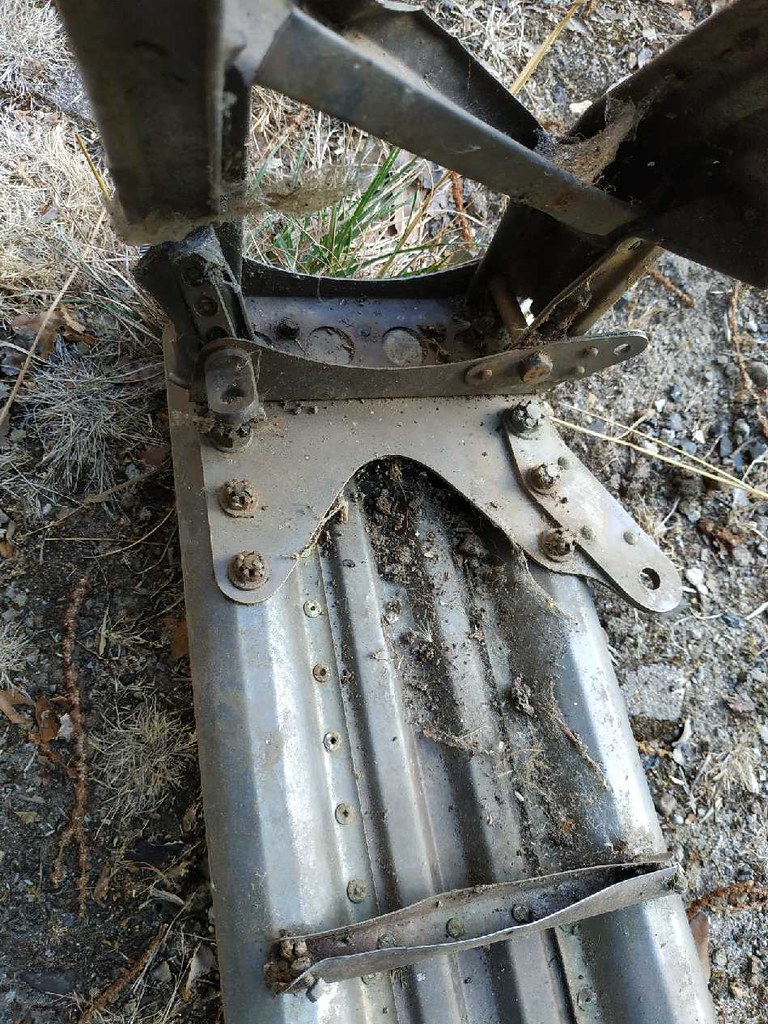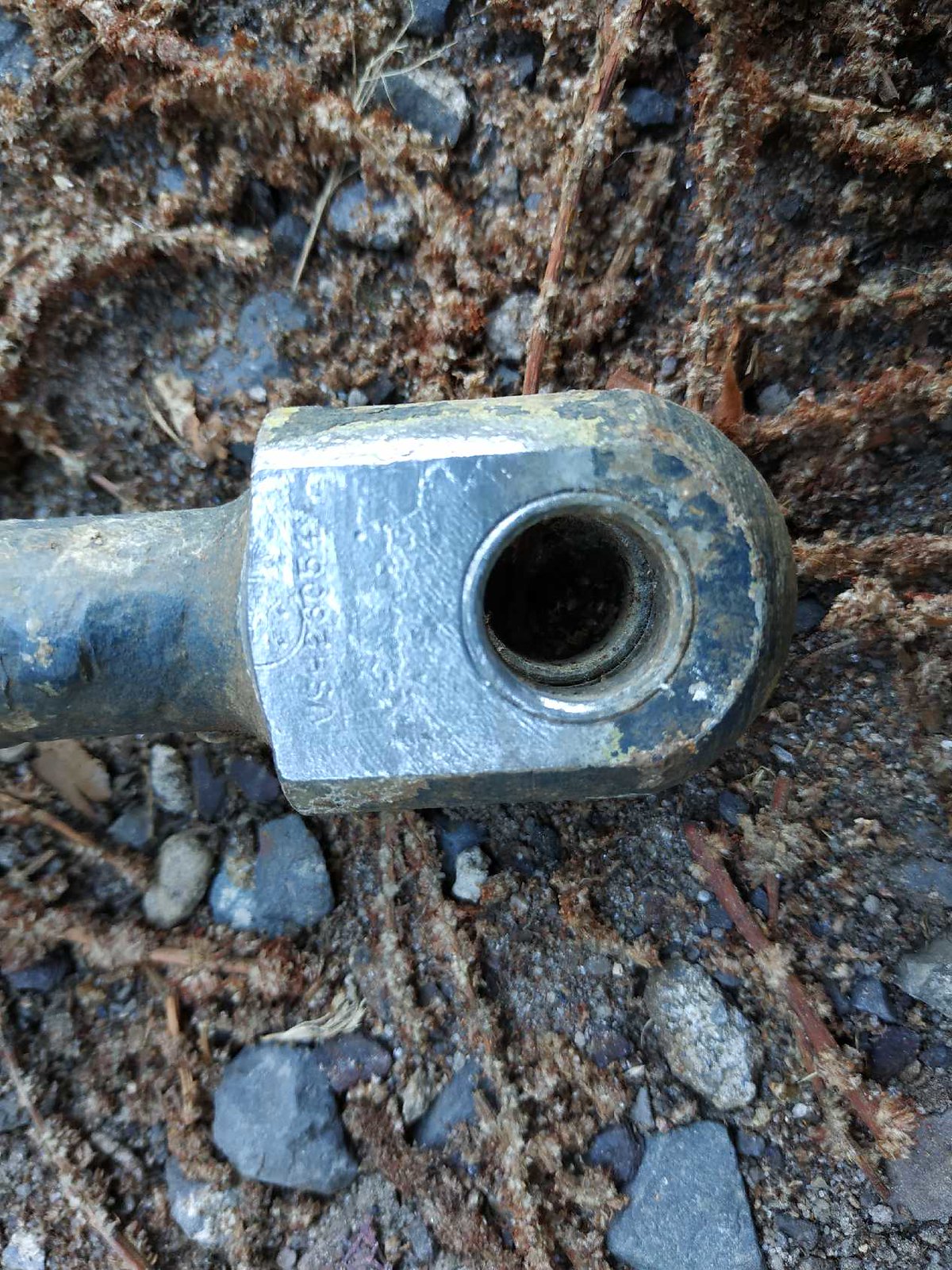|
|
Post by agile on Mar 7, 2020 16:59:20 GMT 12
Holy rareoplanes Batman! Mike, if that's Ed M in Melbourne I thought he'd be a good bet - I emailed him this morning to see whether he recognised any of these bits.
The owner sent through a few more pics today, I'll post them when I'm on my pc. Thanks to everyone for taking an interest.
Cheers
A
|
|
|
|
Post by curtiss on Mar 7, 2020 18:27:47 GMT 12
I have a pair of Walrus undercarriage legs available if anyone has an interest in such things.....
|
|
|
|
Post by markrogers on Mar 7, 2020 18:46:36 GMT 12
Interesting thread!
|
|
|
|
Post by Dave Homewood on Mar 7, 2020 19:13:47 GMT 12
There is a Walrus droptank at the Tauwhare Military Museum here in Cambridge, I wonder if that also came from Rukuhia?
|
|
|
|
Post by madmac on Mar 7, 2020 23:08:08 GMT 12
looking at the end fitting of the stainless spar which looks pretty beefy, I guess it would be the rear spar as this is the hinge point of the wing when it folds.
|
|
|
|
Post by davidd on Mar 8, 2020 7:39:56 GMT 12
Dave,
I have never heard of Walrus aircraft fitted with drop tanks, but, as always, I stand to be corrected - I have been caught out before! As Walrus were equipped with standard bomb carriers, and often external fuel tanks were designed to be carried on standard bomb carriers (along with the additional plumbing required of course), then it is entirely possible. Were Walrus drop tanks peculiar to type or were they a standardised RAF/RN item?
David D
|
|
|
|
Post by Dave Homewood on Mar 8, 2020 8:01:20 GMT 12
Sorry, did I say droptank? Complete cock up, I meant to write a Walrus float!   |
|
|
|
Post by emron on Mar 8, 2020 21:03:33 GMT 12
looking at the end fitting of the stainless spar which looks pretty beefy, I guess it would be the rear spar as this is the hinge point of the wing when it folds. There is one of those stainless steel box ribs on each end of the wing centre section and six spread along each of the outer main planes, so it’s a bit difficult to tell what sections are pictured here. There’s a substantial hinge on the inner rear spar end of each main plane as well as a heavy locking mechanism on the inner front spar end. |
|
|
|
Post by emron on Mar 8, 2020 21:32:42 GMT 12
Sorry, I’ve now looked closer at photo 13 and agree that in the foreground is the inboard end and rear spar of the port bottom main plane of Walrus.
|
|
|
|
Post by madmac on Mar 10, 2020 2:50:22 GMT 12
Is it me or does that look like a two squadron code in red on that part. The rivets look to be still intacted so its an american part with an RAF style scheme (I can't think of American style used by the RNZAF with squadren markings). The stepped flange doesn't look to have any holes in it, so its for something that moved forward and aft (the letter give it a direction). the only ones I can think of on a wing would be landing gear, of with only the P40 & Corsair would be applicable, but the P40 gear door is the wrong shape and the Corsair didn't have red SQN codes that I can think of. So its probaldy a fuse located item but its unlikely anything on a fuse would require the little bump fairing. What I have I missed?  |
|
|
|
Post by agile on Mar 10, 2020 18:46:24 GMT 12
Interesting. Were red codes a thing out here/in the Pacific? The family S+S Tech just looked over my shoulder and opined that the red is primer. The owner has sent a few more pics. The magic part number '22' is visible on the spar parts. I find #35 intriguing: 27.  28.  29.  30.  31.  32.  33.  34.  35.  36.  37.  38.  39.  40.  |
|
|
|
Post by madmac on Mar 11, 2020 7:24:06 GMT 12
Was Red an aluminum primer colour for that period, I can think of red timber primer and red dope, but only yellows and greens for aluminum primer.
|
|
|
|
Post by davidd on Mar 11, 2020 9:11:02 GMT 12
I see ALCOA on one of the castings - hope everybody knows what that means. Also saw a part number with a VS-prefix (images 8 and 9 from bottom), that of course is for Vought-Sikorsky (meaning F4U Corsair in this part of the world). Madmacs section of (fuselage?, lower side of centre section?) looks to my eye to be a panel painted red. Cannot make out anything remotely like fuselage code letters. The streamlined bulge gives some orientation as to how this part fits onto the parent aircraft, not that this helps much at this early stage. This recent spate of reasonably good and clear colour photographs seems to show a mix of American and old British airframe parts (particularly parts of the control systems), and some radial engine parts such as exhaust manifolds and ignition harnesses (or at least the protective conduit for it).
David D
|
|
|
|
Post by curtiss on Mar 11, 2020 11:42:39 GMT 12
The link chutes are P40. I would be interested in getting them for NZ3220 if they are available.
|
|
|
|
Post by agile on Mar 11, 2020 19:24:31 GMT 12
PM inbound Mike.
Cheers
A
|
|
|
|
Post by emron on Mar 14, 2020 17:04:11 GMT 12
Sorry, I’ve now looked closer at photo 13 and agree that in the foreground is the inboard end and rear spar of the port bottom main plane of Walrus. I haven’t been able to ID any of the other items so far but on learning about the existence of these Walrus parts it set me thinking. Was this collection of parts that are from various aircraft types the result of a yard / barn find or were they from a recent dig?. I’m wondering if there may be more out there to be uncovered and with some further info we might be able to work out which Walrus the wing/s came off. |
|
|
|
Post by agile on Mar 14, 2020 19:56:52 GMT 12
I understand that it came from a farm rubbish pit somewhere in the Waikato around Hamilton. From the way it was described I don't think there's more to find.
I have been wondering the same, logic says one of those broken up at Hobsonville or maybe one of the Exton aircraft?
|
|
|
|
Post by Dave Homewood on Mar 14, 2020 21:15:49 GMT 12
No. 4 (Fighter) Operational Training Unit used red unit code letters on its P-40's and Harvard's.
|
|
|
|
Post by madmac on Mar 14, 2020 21:48:32 GMT 12
It would be interesting to workout if the dump they came from was the result of post war smelting or RNZAF maintenance dumping. The spars could be post war scrapping left overs, but can't see why the other bits weren't melted down.
ADF series notes K8558 as "Believed rebuilt to taxi-only standard for training then used as instructional airframe". I wonder if it had wings after it was rebuild.
|
|
|
|
Post by emron on Mar 17, 2020 14:35:55 GMT 12
I have a pair of Walrus undercarriage legs available if anyone has an interest in such things..... I too know the whereabouts of an oleo or two.  They must to be the only abundant Walrus parts around the country, as everything else seems to be as rare as the proverbial hen’s tusk. The Walrus is credited with being the first British military aircraft to have a fully retractable undercarriage and enclosed cockpit. I took that as a good enough reason to read up the manual about the retraction mechanism and see if a working example would be feasible. It’s a fairly simple method, the main leg strut is connected at the top to a lever on which it pivots through about 90 degrees and is driven by a hydraulic ram under pressure from a hand pump. The leg is retained in the up and down positions by spring loaded locking pins and is supported through the movement by a radius arm. I don’t know where any of those other original parts are so all I plan to do further in the meantime is just take measurements and make some scale drawings of the layout. I would be greatly interested to hear if any of those other parts still exist around NZ though. |
|



